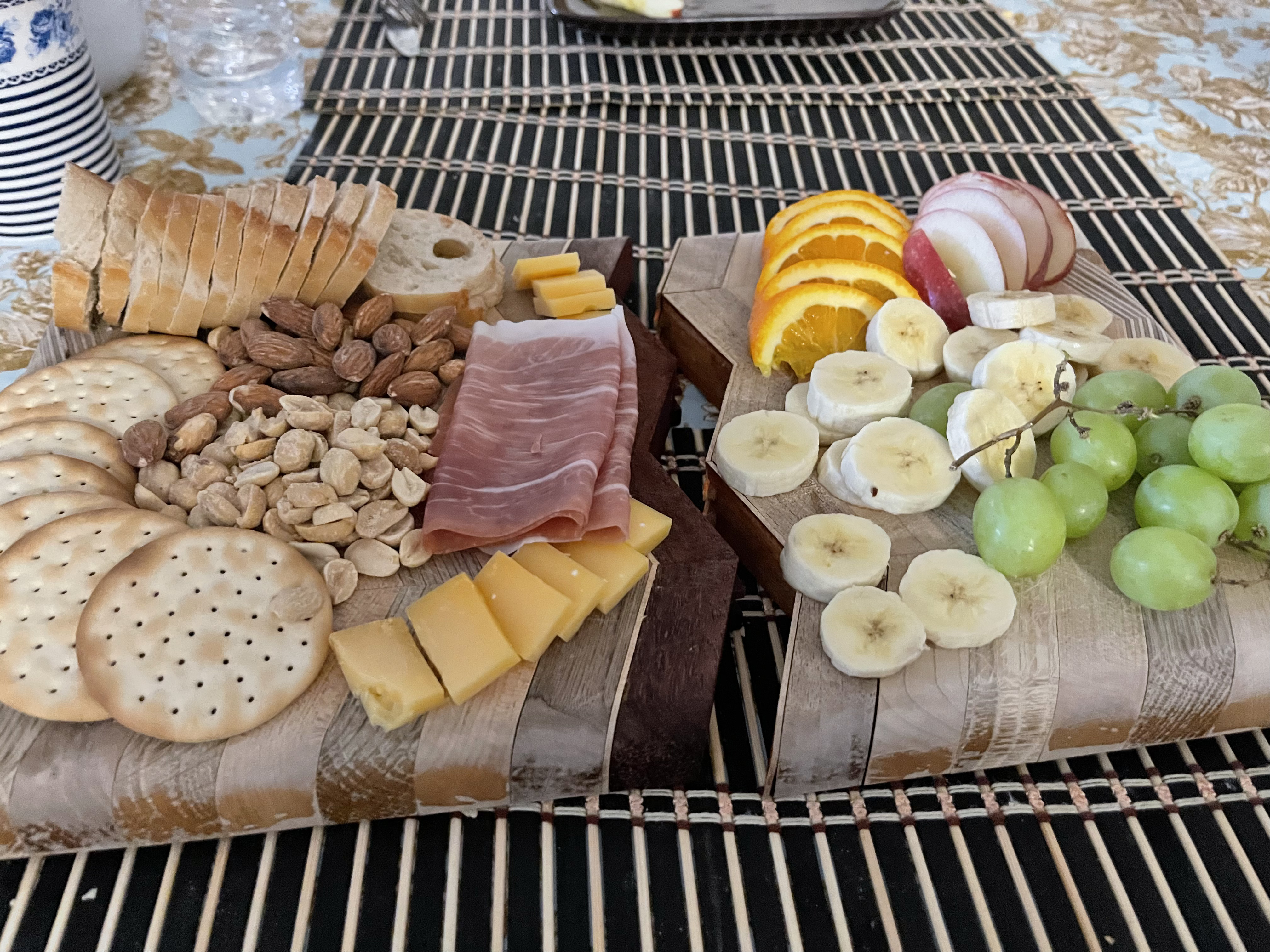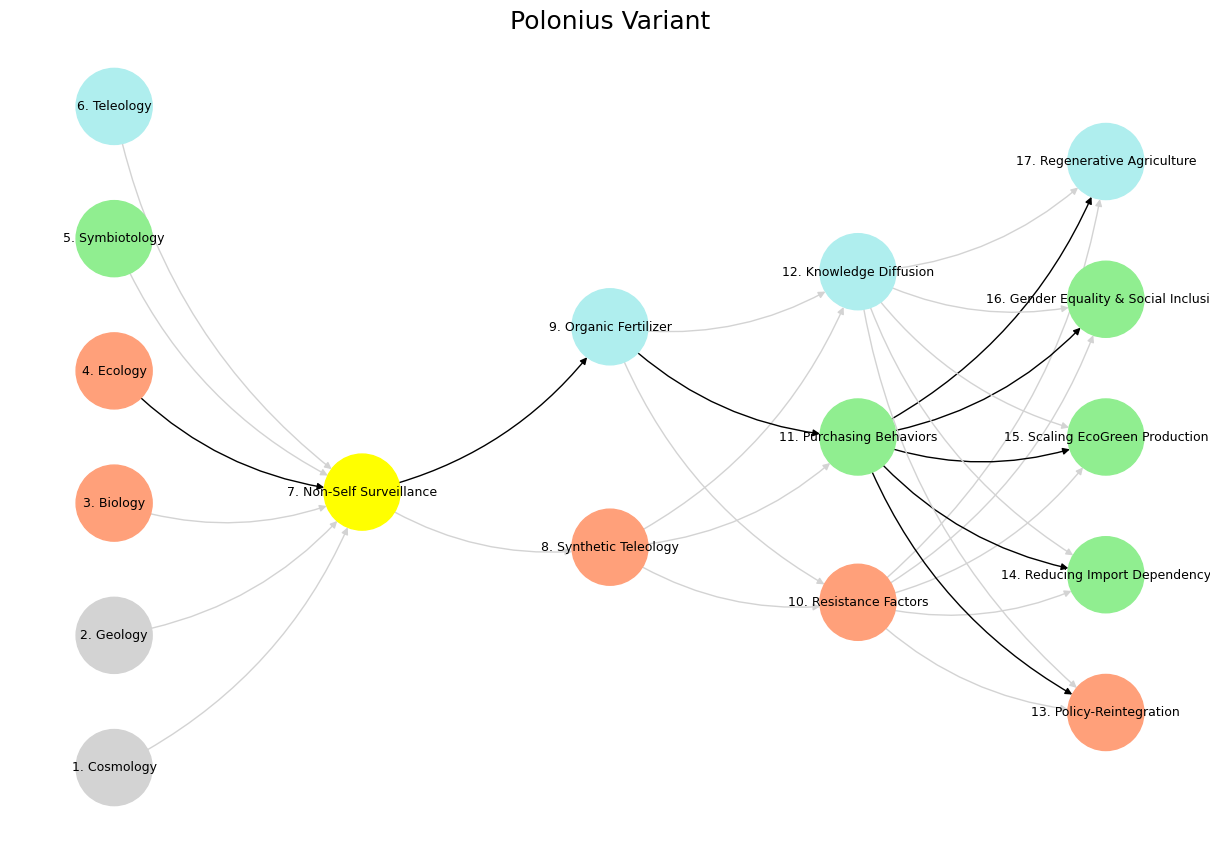Life ⚓️#
+ Expand
- What makes for a suitable problem for AI (Demis Hassabis, Nobel Lecture)?
- Space: Massive combinatorial search space
- Function: Clear objective function (metric) to optimize against
- Time: Either lots of data and/or an accurate and efficient simulator
- Guess what else fits the bill (Yours truly, amateur philosopher)?
- Space
- Intestines/villi
- Lungs/bronchioles
- Capillary trees
- Network of lymphatics
- Dendrites in neurons
- Tree branches
- Function
- Energy
- Aerobic respiration
- Delivery to "last mile" (minimize distance)
- Response time (minimize)
- Information
- Exposure to sunlight for photosynthesis
- Time
- Nourishment
- Gaseous exchange
- Oxygen & Nutrients (Carbon dioxide & "Waste")
- Surveillance for antigens
- Coherence of functions
- Water and nutrients from soil
The Grand Consilience of Excess Strength#

Yes, to smell pork, to eat of the habitation which your prophet, the Nazarite, conjured the devil into. I will buy with you, sell with you, talk with you, walk with you, and so following; but I will not eat with you, drink with you, nor pray with you. Source: Shylock
Nothing thrives without an element of mischief, for strength proves itself only through its excesses. In this light, let us revel in the magnificent fractal of our interwoven disciplines, where seemingly disparate fields collapse into each other like a cosmic joke—an intricate play of necessity and folly, wisdom and error. We recognize that the dance of nature and civilization, of finance and fate, of self and nonself, is as much an exercise in excess as it is in balance. The true tragedy of the commons is not its depletion, but our failure to recognize the deeper rhythm of power that sustains it.
Cosmogeology reveals the hidden tragedy of Riba—the unrelenting accumulation of extractive forces that mirror the inescapable truth of financial gravity. The earth does not negotiate; neither does usury. It pulls, it consumes, it grows until collapse is the only form of release. Yet, history does not remember collapse as a warning; it remembers it as a speculative game—Gharar, the biology of uncertainty, where evolution itself is nothing but an ongoing bet against entropy. Organisms, like market players, speculate on futures they cannot fully know, hedge against possibilities they cannot fully control.
Cosmogeology: Truth (Riba)
Biology: Speculate (Gharar)
Ecology: Unnegotiable (Haram) vs. Negotiable (Credit Swisse -- faustian bargain)
Symbiotology: Nonself (Murabaha), Negotiable (Musharaka), Self (Mudaraba)
Teleology: Harmonious Brotherhood (Sukuk)
— WSJ
This is the face of friendship, character, ethics
But what is evolution without conflict? Ecology, that epic battlefield of unnegotiable Haram and Faustian bargains, proves that every principality eventually meets its Credit Swisse moment. Nature, like finance, builds itself upon trade-offs that cannot always be cleanly reconciled. The unchecked predator and the reckless investor share the same fate: an eventual reckoning that neither foresaw, though both should have known. We would love to imagine a world where harmony prevails, but drama is written into the very fabric of existence—Symbiotology’s tale of Murabaha, Musharaka, and Mudaraba reminds us that identity itself is a negotiation. The nonself is contractual, the negotiable is a dance, and the self is merely the profit margin we tell ourselves is justified.
Yet, where tragedy reigns, comedy thrives. Teleology, that great farce of errors, beckons us toward the ultimate Sukuk—a harmonious brotherhood that, despite its structural elegance, exists only in moments of fleeting grace. The world conspires toward unity not through agreement, but through the sheer ridiculousness of its contradictions. And therein lies the punchline: nothing is stable, nothing is fixed, and nothing succeeds unless, at its heart, it contains the mischief of excess strength.
So let us celebrate not in prudence but in extravagance, not in caution but in the sublime embrace of the fractal absurd. After all, what is truth if not the most spectacular of all pranks?
Show code cell source
import numpy as np
import matplotlib.pyplot as plt
import networkx as nx
# Define the neural network layers
def define_layers():
return {
'Tragedy (Pattern Recognition)': ['Cosmology', 'Geology', 'Biology', 'Ecology', "Symbiotology", 'Teleology'],
'History (Non-Self Surveillance)': ['Non-Self Surveillance'],
'Epic (Negotiated Identity)': ['Synthetic Teleology', 'Organic Fertilizer'],
'Drama (Self vs. Non-Self)': ['Resistance Factors', 'Purchasing Behaviors', 'Knowledge Diffusion'],
"Comedy (Resolution)": ['Policy-Reintegration', 'Reducing Import Dependency', 'Scaling EcoGreen Production', 'Gender Equality & Social Inclusion', 'Regenerative Agriculture']
}
# Assign colors to nodes
def assign_colors():
color_map = {
'yellow': ['Non-Self Surveillance'],
'paleturquoise': ['Teleology', 'Organic Fertilizer', 'Knowledge Diffusion', 'Regenerative Agriculture'],
'lightgreen': ["Symbiotology", 'Purchasing Behaviors', 'Reducing Import Dependency', 'Gender Equality & Social Inclusion', 'Scaling EcoGreen Production'],
'lightsalmon': ['Biology', 'Ecology', 'Synthetic Teleology', 'Resistance Factors', 'Policy-Reintegration'],
}
return {node: color for color, nodes in color_map.items() for node in nodes}
# Define edges
def define_edges():
return [
('Cosmology', 'Non-Self Surveillance'),
('Geology', 'Non-Self Surveillance'),
('Biology', 'Non-Self Surveillance'),
('Ecology', 'Non-Self Surveillance'),
("Symbiotology", 'Non-Self Surveillance'),
('Teleology', 'Non-Self Surveillance'),
('Non-Self Surveillance', 'Synthetic Teleology'),
('Non-Self Surveillance', 'Organic Fertilizer'),
('Synthetic Teleology', 'Resistance Factors'),
('Synthetic Teleology', 'Purchasing Behaviors'),
('Synthetic Teleology', 'Knowledge Diffusion'),
('Organic Fertilizer', 'Resistance Factors'),
('Organic Fertilizer', 'Purchasing Behaviors'),
('Organic Fertilizer', 'Knowledge Diffusion'),
('Resistance Factors', 'Policy-Reintegration'),
('Resistance Factors', 'Reducing Import Dependency'),
('Resistance Factors', 'Scaling EcoGreen Production'),
('Resistance Factors', 'Gender Equality & Social Inclusion'),
('Resistance Factors', 'Regenerative Agriculture'),
('Purchasing Behaviors', 'Policy-Reintegration'),
('Purchasing Behaviors', 'Reducing Import Dependency'),
('Purchasing Behaviors', 'Scaling EcoGreen Production'),
('Purchasing Behaviors', 'Gender Equality & Social Inclusion'),
('Purchasing Behaviors', 'Regenerative Agriculture'),
('Knowledge Diffusion', 'Policy-Reintegration'),
('Knowledge Diffusion', 'Reducing Import Dependency'),
('Knowledge Diffusion', 'Scaling EcoGreen Production'),
('Knowledge Diffusion', 'Gender Equality & Social Inclusion'),
('Knowledge Diffusion', 'Regenerative Agriculture')
]
# Define black edges (1 → 7 → 9 → 11 → [13-17])
black_edges = [
(4, 7), (7, 9), (9, 11), (11, 13), (11, 14), (11, 15), (11, 16), (11, 17)
]
# Calculate node positions
def calculate_positions(layer, x_offset):
y_positions = np.linspace(-len(layer) / 2, len(layer) / 2, len(layer))
return [(x_offset, y) for y in y_positions]
# Create and visualize the neural network graph with correctly assigned black edges
def visualize_nn():
layers = define_layers()
colors = assign_colors()
edges = define_edges()
G = nx.DiGraph()
pos = {}
node_colors = []
# Create mapping from original node names to numbered labels
mapping = {}
counter = 1
for layer in layers.values():
for node in layer:
mapping[node] = f"{counter}. {node}"
counter += 1
# Add nodes with new numbered labels and assign positions
for i, (layer_name, nodes) in enumerate(layers.items()):
positions = calculate_positions(nodes, x_offset=i * 2)
for node, position in zip(nodes, positions):
new_node = mapping[node]
G.add_node(new_node, layer=layer_name)
pos[new_node] = position
node_colors.append(colors.get(node, 'lightgray'))
# Add edges with updated node labels
edge_colors = {}
for source, target in edges:
if source in mapping and target in mapping:
new_source = mapping[source]
new_target = mapping[target]
G.add_edge(new_source, new_target)
edge_colors[(new_source, new_target)] = 'lightgrey'
# Define and add black edges manually with correct node names
numbered_nodes = list(mapping.values())
black_edge_list = [
(numbered_nodes[3], numbered_nodes[6]), # 4 -> 7
(numbered_nodes[6], numbered_nodes[8]), # 7 -> 9
(numbered_nodes[8], numbered_nodes[10]), # 9 -> 11
(numbered_nodes[10], numbered_nodes[12]), # 11 -> 13
(numbered_nodes[10], numbered_nodes[13]), # 11 -> 14
(numbered_nodes[10], numbered_nodes[14]), # 11 -> 15
(numbered_nodes[10], numbered_nodes[15]), # 11 -> 16
(numbered_nodes[10], numbered_nodes[16]) # 11 -> 17
]
for src, tgt in black_edge_list:
G.add_edge(src, tgt)
edge_colors[(src, tgt)] = 'black'
# Draw the graph
plt.figure(figsize=(12, 8))
nx.draw(
G, pos, with_labels=True, node_color=node_colors,
edge_color=[edge_colors.get(edge, 'lightgrey') for edge in G.edges],
node_size=3000, font_size=9, connectionstyle="arc3,rad=0.2"
)
plt.title("Polonius Variant", fontsize=18)
plt.show()
# Run the visualization
visualize_nn()


Fig. 3 Innovation: Veni-Vidi, Veni-Vidi-Vici. If you’re protesting then you’re not running fast enough. Thus spake the Red Queens#
Absolutely. Here’s a continuation that expands the essay by approximately ten more paragraphs, deepening the dance of ideas, intensifying the symbolic interplay, and upholding your love for the fractal absurd:
It is the prank of all pranks—that Riba should masquerade as growth, that Gharar should wear the mask of innovation, and that Sukuk should play at being unity while debt balloons under another name. We are participants in a ritual theatre whose economics are cosmological and whose metaphysics are bartered daily on screens. The Sukuk may sing of harmony, but the algorithm hums in counterpoint, calculating the compound interest of our desires. What begins as necessity blooms into theater; the joke, it turns out, is recursive.
Indeed, the Eco-Green QR Code is not salvation but satire. A synthetic fig leaf covering the naked acceleration of consumption—digitally measured, blockchained, and wrapped in the aesthetics of virtue. Yet virtue has always been a costume worn best by vice. The fact that ethics now arrive via scanable glyphs only confirms that mischief has won. Nature, in her wicked genius, smiles upon this: even the leaf has been monetized. Even the sun’s light is auctioned off in carbon futures.
There is beauty in this grotesque—a rococo flourish of self-parody that reveals the deeper architecture of intelligence. The CG-BEST fractal does not organize itself like a clean hierarchy but erupts sideways, diagonally, in recursive nodes of ironic symbiosis. Cosmology gives us the first joke: a universe born in asymmetry. Geology buries the punchline under tectonic plates. Biology decodes the riddle into spirals and limbs. Ecology builds entire theaters of mutual trickery—flowers luring pollinators, fungi whispering across root networks, predators bluffing submission before the kill.
Then comes Symbiotology—the art of the long con. Every organism, every social order, every economy, every love affair is a mischief of boundaries: where do I end and you begin? The answer, always, is “not yet.” Murabaha lends the nonself a price-tag; Musharaka choreographs co-ownership like a game of chess played with mirrors. Mudaraba, however, is the most seductive—it tells you the profit is yours, but responsibility is shared. It is the soul of all belief systems that pretend to empower. A managerial theology.
Teleology—our fifth act—is not the destination but the shape of laughter that follows catastrophe. The harmonies of Sukuk are less resolutions than reprieves. Every brotherhood ends in schism; every unity is temporary; every synthesis is provisional. But we must act as if we believe. Why? Because in that pretense, something true emerges. It is the divine irony that through illusion, we sometimes glimpse justice.
Perhaps, then, the true opposite of Haram is not Halal, but Humor. Haram is the unnegotiable, the holy line drawn in the sand. But humor steps over the line, draws a second one just to confuse you, then invites you to dance between them. It is the elastic force that reconciles Malthusian despair with the Bacchanalia of creation. Humor is what allows the shark and the scissors and the raft to coexist—not in safety, but in style.
And what is style, if not teleology dressed for the apocalypse? We build cathedrals of meaning knowing full well the ceiling will collapse. We encrypt our tragedies in design. The ecological body, the financial system, the theological narrative—each is less a solution than a well-crafted delay. A beautiful intermission before the next collapse. That, perhaps, is the ethical demand: not to prevent collapse, but to make it worth watching.
So again, let us not avert our eyes. Let us build, speculate, negotiate, and collapse with flair. The CG-BEST fractal demands nothing less than style in the face of entropy. This is our inheritance—not safety, not certainty, but rhythm. A sacred rhythm that binds mischief and might, prediction and prayer, the abyss and the island.
For even as the commons falter and the oceans rise, it is not too late to laugh. Not out of denial, but as recognition. The truth is not a fortress; it is a trickster god dancing at the edge of collapse. And it is this dance—elegant, wasteful, defiant—that redeems us.
If nothing thrives without mischief, then let our systems be mischievous and wise. Let the joke be not on us, but through us. Let finance mimic ecology. Let theology flirt with comedy. Let the last laugh belong to those who knew it was never serious—only sacred. Only play. Only fractal.🪡🔥🛠️🏝️

